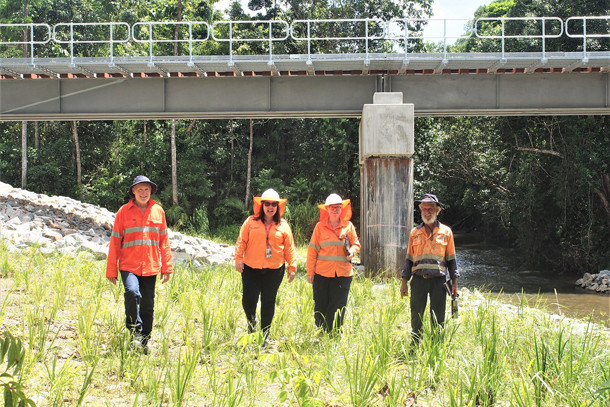Community
7 May, 2021
Helping the Cassowaries
Cassowary-friendly plants are growing underneath a new railway bridge near Tully, thanks to a partnership between Queensland Rail and local organisations.

Cassowary food shrubs and native groundcovers were planted in December at a replacement bridge at Big Maria Creek in the Smiths Gap area.
Queensland Rail, Terrain NRM and C4 representatives inspected the new plantings recently.
“Smiths Gap is a focus at the moment, with overtaking lanes and a cassowary land bridge being built by the Department of Transport and Main Roads, as well as fencing to lead cassowaries to Maria Creek as a complementary crossing place,’’ Terrain NRM’s Tony O’Malley said.
“So this revegetation project by Queensland Rail is invaluable. This is a cassowary corridor that links Mission Beach with the Atherton Tablelands rainforest.
“With state and local government, conservation groups and the cassowary recovery team all working together, we’ve got a planting outcome that works for cassowaries now and into the future, and one that also meets rail requirements.”
Cassowaries are only found in North Queensland and Papua New Guinea, and they are an endangered species in Australia.
Queensland Rail’s Renee Madden-Hallett said working together was the key.
“We’ve been able to improve essential infrastructure while also helping with safe movement of cassowaries, thanks to local knowledge and collaboration with a range of groups,’’ she said.
“We needed plant species that were robust, tolerant of flooding and could be planted densely while also being easy to maintain. What we’ve come up with together serves all purposes.”
This project is supported by Terrain NRM through funding from the Australian Government’s National Landcare Program.


